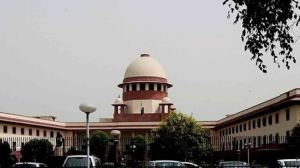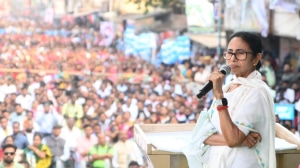Moody’s warns of worsening health of banks
MUMBAI/NEW DELHI, AUG 3: Global credit rating firm Moody's has projected a bleak outlook for the Indian banking sector as it continued to...

MUMBAI/NEW DELHI, AUG 3: Global credit rating firm Moody’s has projected a bleak outlook for the Indian banking sector as it continued to be plagued by high level of non-performing assets and incomplete reforms.
Maintaining its "negative credit outlook" on the Indian banking sector, the rating agency said "past directed lending practices have resulted in a high level of non-performing loans, which continue to grow despite recent focus on asset quality".
The Moody’s observation has come at a time when public sector Indian Bank announced a huge net loss of Rs 788.50 crore for the year 1998-99. The massive net loss, its fourth in a row, pushed its accumulated losses as on March 31, 1999, to Rs 3,181.88 crore, wiping out its net worth of Rs 2,898.63 crore. In effect, Indian Bank’s negative net worth now stands at Rs 283 crore.
"Incomplete reform process has prevented public sector banks from modernising their management practices. Automation is still at a low level, and although improving, credit skills arepoor," Moody’s said in its latest report on Banking system outlook’.
The slow legal system and inappropriate legislation prevented banks from recovering bad loans, the report said, adding that infrastructure bottlenecks and poor regulations were holding back economic growth. "Moody’s expects asset quality to get worse before it improves and believes the situation demands decisive legislative reform before this happens," the report by Moody’s analyst George Mouskides said.
Moody’s said despite the banking sector reform initiated in 1991, the "social" character of public sector banks has not changed in any fundamental way. "They are still being used to extend finance to specific sectors of the economy (through lending to priority sector), despite the recognition that market forces are perhaps a more efficient means of allocation of banking assets."
Although public sector banks were still controlled by the government, fiscal pressures might speed up the process of banking sector liberalisation, leadingperhaps to full privatisation, the report said.
The rating agency said asset quality problems of banks were likely to persist despite bank managements attaching maximum priority to the issue. It said recent market conditions and investor recognition of the banks’ weak financial situation have made raising capital in the domestic equity market difficult.
In the case of Indian Bank, out of a total provision of Rs 615 crore, Rs 530 crore was made towards non-performing assets (NPAs) and Rs 46 crore to meet its commitments to IndBank Mutual Fund for its Ind Jyoti scheme. "Unless banks are seen to improve their profitability and unless investor’s concern about their asset quality subside, capital raising will continue to be difficult or at least an expensive exercise," the report said.
It said although the second Narisimhan committee report on banking sector reforms contained regulations which were progressive in nature, the weakest banks would still find it difficult to comply with theregulations.
Meanwhile, the quarterly results of nearly a dozen banks provide a mixed bag with a majority of the public sector banks led by State Bank of India reporting a decline in profits while private sector banks have performed reasonably well. The higher provisioning at Rs 549.41 crore compared to last year’s Rs 477.60 crore contributed to the net falling by 40 per cent.
Bank of Baroda’s net profit has increased by 10 per cent while its operating profit has actually decreased by 7.6 per cent. The operating profit of Dena Bank declined by 4.11 per cent to rs 62.45 crore. There was a marginal 1.12 per cent increase in net profit at rs 34.05 crore. Bank of India reported a sharp fall in its operating profit at Rs 121 crore (Rs 206 crore).
As opposed to the public sector banks, the private sector banks have performed better in the first quarter of the fiscal, probably because they had lower provisioning outgo. One exception would be Vysya Bank, the older generation private bank which has reported anoperating profit of Rs 20.46 crore this year compared to Rs 25.29 last year. While interest income and other income have increased in small amounts. Among the new generation private banks, IDBI Bank’s operating profit has gone up from Rs 8.42 crore to Rs 13.55 crore. In fact, a scrutiny of the unaudited results show that the expenditure has risen very little in proportion to the rise in income, especially other income, which has nearly doubled.





- 01
- 02
- 03
- 04
- 05


























